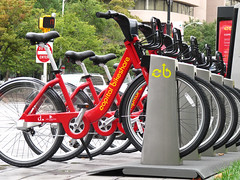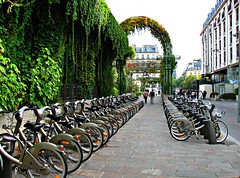In contrast to the apparent teething problems of London’s Bike Sharing program, Washington seems to be succeeding according to Kaid Benfield on Sustainable Cities Collective

In the heart of Washington, D.C., a revolution on two wheels has been quietly transforming the cityscape. Capital Bikeshare, the city’s beloved bikesharing program, proudly boasts a community of nearly 11,000 members, with a fleet of 1100 bikes zipping through the streets via over 110 strategically placed self-service stations across the city and Arlington, Virginia.
Numbers tell a fascinating tale, and the binary symmetry of 11,000 members and 110 stations adds a touch of numerical poetry to this urban narrative. The Washington Post, in a recent article by Ashley Halsey III, sheds light on the phenomenal success of Capital Bikeshare. Since its launch on September 20, more than 300,000 rides have been logged, with a staggering average of 3,000 rides per day in mid-April, making these distinctive red bikes a ubiquitous sight.

One can’t help but marvel at the simplicity and accessibility of the system. Offering memberships for 24 hours, 5 days, 30 days, or a year, Capital Bikeshare provides round-the-clock access to bikes, 365 days a year. The convenience is matched only by the attractiveness of the sturdy red bikes themselves, doubling as rolling advertisements for the program.





